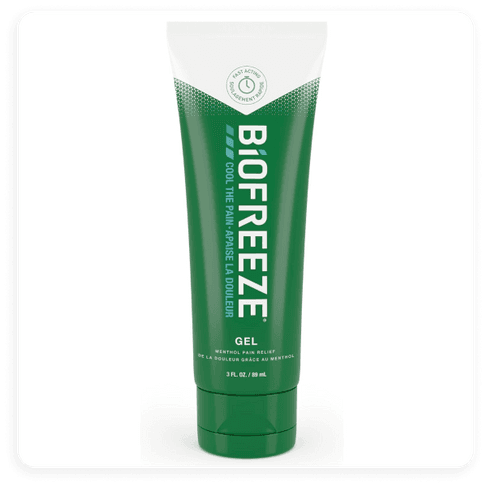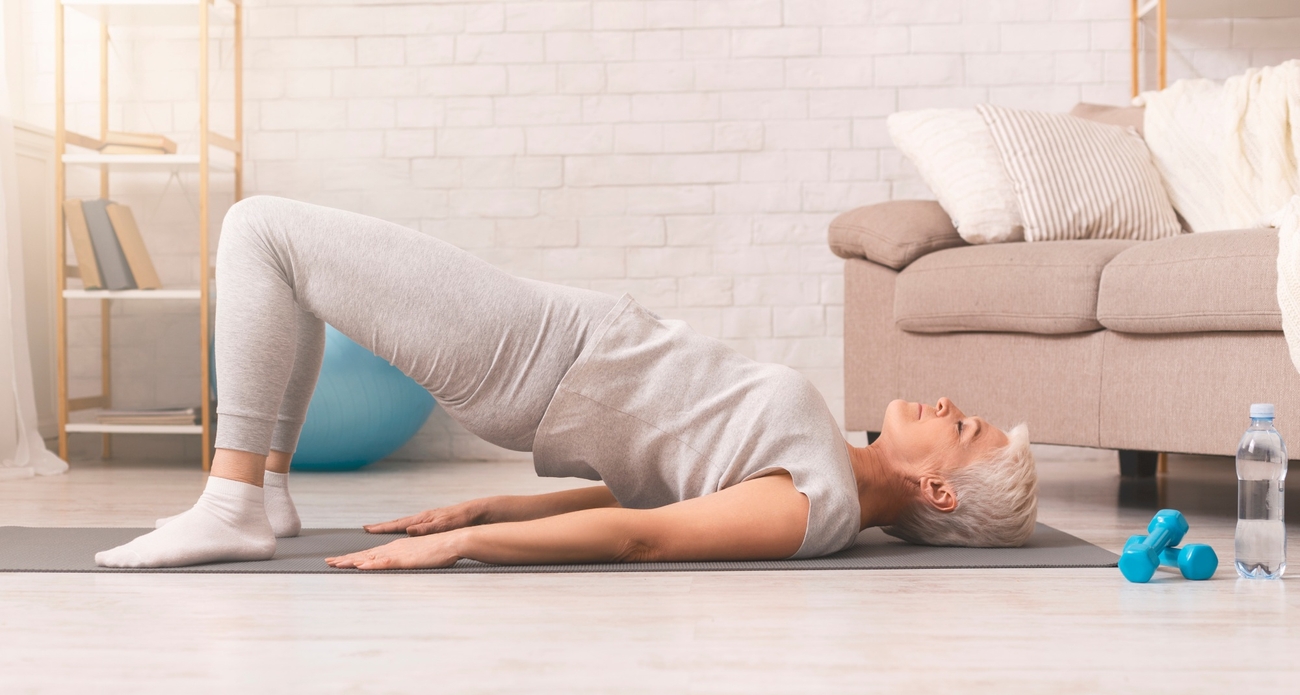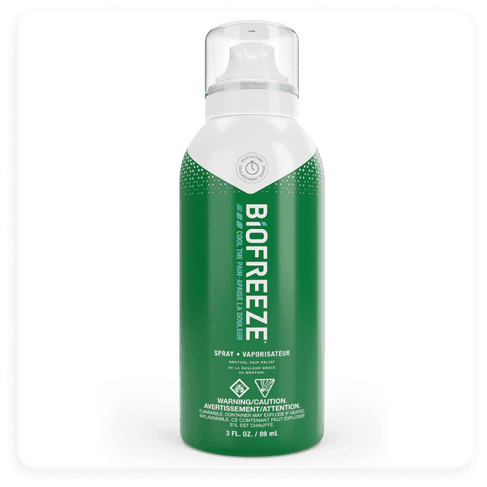Easy application
Targeted relief
Easily covers small & large areas

This article has been medically reviewed for accuracy
There are many potential causes for lower back pain—from a strain due to heavy lifting, to a daily routine that involves sitting at a desk for hours on end.
Lower back pain is a common condition affecting adults globally. According to a 2019 National Health Interview Survey1, back pain was the top location of pain for adults in the United States.
Part of the reason why so many experience back pain—especially lower back pain—is because the lower back plays a crucial role in supporting upper body weight2 and facilitating full-body movement. Even without injury, the force the lower back withstands from just daily living can create a lot of wear and tear to the components of the back (the spine, supporting muscles, facet joints, and intervertebral discs). Certain factors including age, weight, physical lifestyle and even nicotine usage3 may be used to predict occurrence of lower back pain.
Keep reading to learn more about the multiple causes of lower back pain, common symptoms people experience, and the various treatment options available.
Generally, daily wear and tear can be a contributing factor to lower back pain. However, some of the most common causes of pain in the lower back are due to minor injuries, a physical lifestyle (or lack of it), and age-related conditions.
Being in a seated position puts more pressure on your back and your intervertebral discs, as well as contributing to stiff and rigid hips. Being inactive may also increase the risk of lower back pain and back injuries4, particularly when participating in more strenuous activities.
Familiar scenarios might include working at your computer all day and taking minimal breaks, or going on a long drive.
Another fairly common cause of lower back pain is a minor injury from strenuous physical activity. Bending, twisting, and lifting relatively heavy objects4 can easily lead to injury and lower back pain.
For parents, this could simply mean something like lifting or carrying your toddler and moving too quickly. Lifting and rushing at the same time can sprain or injure lower back muscles. Working a job that involves heavy lifting may also cause overexertion of the back muscles, which may lead to muscle strain.
Those who are physically active may still experience lower back pain, especially when following a new workout, for example, that exhausts the body's muscles in ways they're not used to. This is known as delayed onset muscle soreness (DOMS)5. DOMS causes muscles to feel rigid and stiff, sore, and even tender.
A traumatic injury6, which is categorized by three main categories: penetrating, blunt, and decelerating trauma, may result in more severe lower back pain. Common scenarios of minor impact injuries include:
Minor traumatic injuries to the back might leave you with acute pain in the form of soft tissue sprains, strains, or bruises, which may be relieved with topical analgesics like Biofreeze’s* Menthol Pain Relieving Gel7.
Major traumatic injuries might require a more extensive treatment plan that includes prescription pain relief medication, physical therapy, and/or surgery. Be sure to consult with your healthcare provider if you have any questions regarding your injury and lower back pain.
Lumbar facet joint pain describes back pain (aches or stiffness) that radiates from the lower back to one or both buttocks. The pain may even travel further down the groin area and the upper thighs.
This condition results from the gradual deterioration of intervertebral discs8, which causes friction or irritation between spinal joints, resulting in lower back pain.
Lumbar facet joint syndrome tends to occur with increasing age (gradual wear and tear on spinal components) and may present concurrently with other degenerative spinal conditions.
Back pain affects adults globally. Research estimates that as many as eight out of ten adults9 experience some sort of back pain at least once in their lives. Age is a natural contributing factor responsible for the general condition of back posture10, but there are also other important factors to consider in the occurrence of lower back pain.
Physical lifestyle: If you spend a lot of time at a desk due to your work, or any other reason, a sedentary lifestyle can lead to weight gain. This weight gain can, in turn, lead to more pressure, wear and tear, and strain on the lower back11, as it now must support greater upper body weight. In addition, sitting for prolonged periods, especially with poor posture, places constant pressure and strain on the back, increasing the occurrence of backache12 or even more serious lower back injuries.
Strenuous Physical Activity: Partaking in excessive and strenuous physical activity can also be a risk factor. Lifting, bending, or twisting frequently may increase chances of injury to the back. The back is an essential body part that facilitates most daily functioning movements.
There are essentially two types of back pain: acute lower back pain, or chronic lower back pain. The severity and duration of your symptoms can help determine which you are experiencing.
Acute lower back pain is usually short-term13 lasting less than 12 weeks. It may result from a sudden injury, or from no obvious identifiable cause, and tends to be self-resolving. The impact on daily functioning in most cases is minimal.
Chronic lower back pain is pain that persists for more than 12 weeks13, even after attempted treatment. Chronic cases do not necessarily indicate a serious medical problem. However, if you experience chronic pain resulting from a traumatic injury (such as a car accident or a high-impact fall), or that persists intensely and arises frequently, you may want to consult with your healthcare provider.
Whether an acute case or a chronic case, the symptoms of each type of lower back pain are comparable, and may include:
Chronic lower back pain affects your quality of life and may potentially limit your ability to complete simple everyday tasks.
Fortunately, there are several treatment options for relieving lower back pain.
Cold therapy is helpful in numbing the pain, while heat therapy helps to loosen and relax muscles.
Biofreeze’s* menthol-based topical products are a convenient solution that uses cold therapy and provides penetrating relief14 where you need it most.
For the lower back, consider Biofreeze Gel*, Spray*, or mess-free Large Patches*15.
Non-prescription pain medication, including ibuprofen or acetaminophen, may help temporarily relieve symptoms of lower back pain.
For prolonged cases, other treatment options may be more suitable. Please check with your healthcare provider to find the best solution for you.
Chiropractic care16 involves the manual manipulation of joints through applied pressure, or quick pulls at specific parts of the body to improve one's pain, range of movement, and flexibility. Chiropractic care tends to be part of a longer-term pain treatment plan, with patients receiving chiropractic adjustments every four to six weeks, and even more frequently in between as needed.
Physical therapy and exercise are pain relief options that focus on re-developing and strengthening muscles to recover from injury or to avoid one in the first place.
For best results, patients should complete the full course of care to restore strength, mobility, and flexibility.
More serious back injuries may require an invasive procedure to correct or repair spinal damage. However, in most cases of lower back pain, this is an extreme pain relief option.
If you have any concerns about your pain condition, consult with your health care provider to discuss appropriate treatment options for you.
If you have trouble sleeping due to lower back pain, here are some things you can try before you go to bed:
Easy application
Targeted relief
Easily covers small & large areas
Mess-free application
Hard to reach areas
Vanishing menthol scent
Consider speaking with your healthcare provider if your lower back pain is severe, recurring, and/or interferes with your daily living.
*Ensure this product is right for you. Always read and follow the product label.
This article has been medically reviewed for accuracy



Easy application
Targeted relief
Easily covers small & large areas
Mess-free application
Hard to reach areas
Vanishing menthol scent
